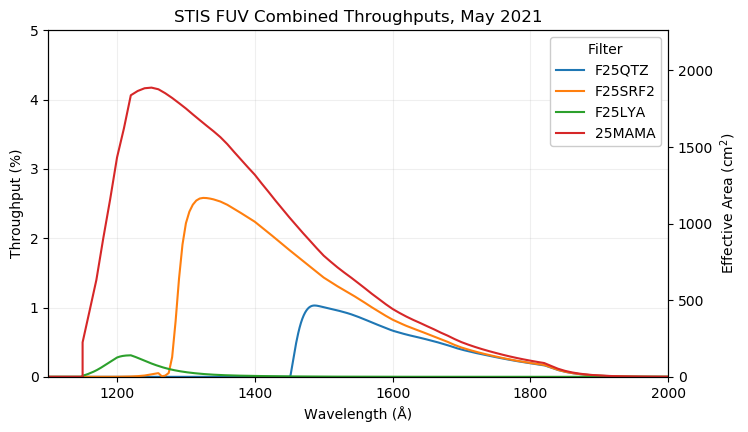Movies of Planetary Aurorae
The Hubble Space Telescope records observations of aurorae using the Space Telescope Imaging Spectrograph (STIS)'s photon counting mode.
These time-tag observations record the position and detection time of individual far ultraviolet (FUV) photons striking the FUV-MAMA detector. These observations are binned spatially into the 1024x1024 low-res pixel format (often truncated to 1024x576) and in time into 100 s bins (incremented 50 s per frame) to show time-domain structure.
Code
Access a Jupyter Notebook demonstrating the calibration and processing techniques used by PlanetaryLightShow.

Colors
The bandpass functions for observations taken with the various FUV filters are shown below:

Since observations evolving in the time-domain can only be taken in one filter at a time, the color images presented on this website map intensity to color using the Matplotlib inferno colormap.
The saturation level refers to the lowest intensity mapped to the bright end of the colormap. So, lower saturation levels emphasize fainter features and higher saturation levels emphasize distinctions in bright features.
Scale Bars
To determine the physical size of a pixel at the distance of Jupiter, we queried the JPL Horizons System for range information and applied the filtered FUV-MAMA corrected mean plate scale of 0.024468"/pix. As the Earth-Jupiter distance changes over time, the physical scale changes as well. Since the aurorae are imaged obliquely on the planet's limb, the linear scale bar must be interpreted with projection effects in mind.
Acknowledgements
This site would not be possible without the hard work of the various investigators and the availability of public data from MAST.
We made use of Astropy, Matplotlib, NumPy, Flask, Frozen-Flask, the JPL Horizons System, and ImageMagick.

